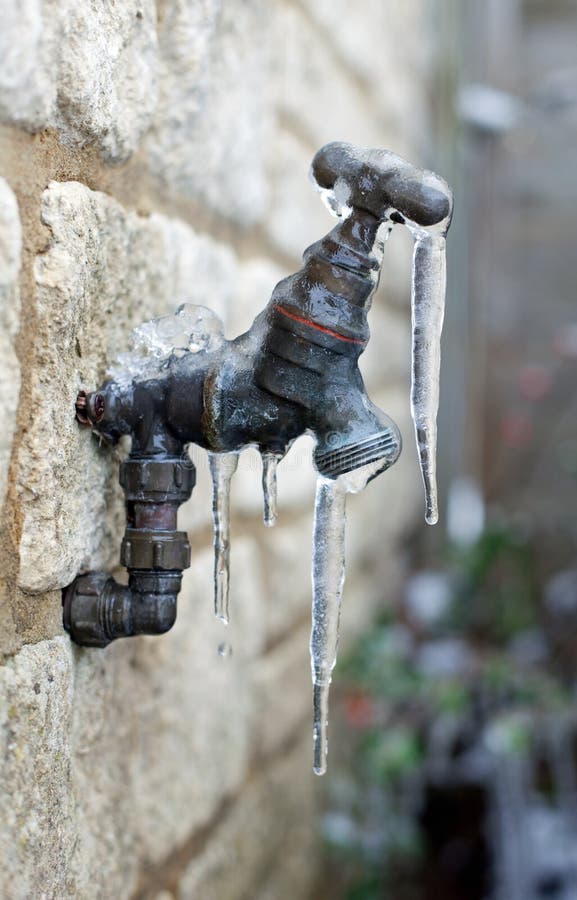Key Approaches for Preventing Frozen Plumbing in Winter
Key Approaches for Preventing Frozen Plumbing in Winter
Blog Article
They are making a few great points about How to Prevent Your Pipes From Freezing overall in this article underneath.

Cold weather can ruin your pipes, specifically by freezing pipelines. Here's just how to prevent it from occurring and what to do if it does.
Introduction
As temperatures decrease, the risk of icy pipelines boosts, potentially resulting in pricey fixings and water damages. Recognizing just how to avoid icy pipes is critical for house owners in cold climates.
Avoidance Tips
Shielding vulnerable pipelines
Cover pipes in insulation sleeves or utilize heat tape to secure them from freezing temperatures. Concentrate on pipelines in unheated or exterior areas of the home.
Heating techniques
Maintain indoor rooms adequately warmed, especially locations with pipes. Open up closet doors to allow cozy air to distribute around pipelines under sinks.
How to identify icy pipelines
Try to find decreased water flow from faucets, unusual smells or sounds from pipes, and noticeable frost on subjected pipelines.
Long-Term Solutions
Architectural modifications
Take into consideration rerouting pipelines away from outside walls or unheated locations. Add added insulation to attics, basements, and crawl spaces.
Upgrading insulation
Buy premium insulation for pipes, attic rooms, and walls. Appropriate insulation assists keep regular temperatures and reduces the risk of icy pipelines.
Securing Outside Pipes
Garden tubes and outdoor taps
Disconnect and drain pipes yard hose pipes before winter season. Mount frost-proof faucets or cover outside faucets with shielded caps.
Understanding Frozen Pipes
What creates pipelines to ice up?
Pipes ice up when exposed to temperature levels listed below 32 ° F (0 ° C) for prolonged durations. As water inside the pipelines ices up, it increases, putting pressure on the pipeline wall surfaces and potentially triggering them to rupture.
Threats and damages
Icy pipelines can result in supply of water disturbances, residential or commercial property damages, and expensive repairs. Burst pipes can flooding homes and cause extensive architectural damage.
Indicators of Frozen Piping
Recognizing icy pipelines early can avoid them from rupturing.
What to Do If Your Pipes Freeze
Immediate actions to take
If you presume frozen pipelines, maintain faucets available to relieve pressure as the ice melts. Make use of a hairdryer or towels soaked in hot water to thaw pipes gradually.
Verdict
Preventing icy pipes needs aggressive procedures and fast reactions. By understanding the causes, signs, and preventive measures, homeowners can safeguard their pipes during winter.
6 Proven Ways to Prevent Frozen Pipes and Protect Your Home
Disconnect and Drain Garden Hoses
Before winter arrives, start by disconnecting your garden hoses and draining any remaining water. Close the shut-off valves that supply outdoor hose bibs and leave the outdoor faucet open to allow any residual water to drain. For extra protection, consider using faucet covers throughout the colder months. It’s also important to drain water from any sprinkler supply lines following the manufacturer’s directions.
Insulate Exposed Pipes
Insulating your pipes is an effective way to prevent freezing. Pipe insulation is readily available at home improvement stores and is relatively inexpensive. Pay close attention to pipes in unheated areas such as the attic, basement, crawl spaces, or garage. Apply foam insulation generously to create a buffer against the cold. You can also wrap your pipes in heat tape or thermostat-controlled heat cables for added warmth.
Seal Air Leaks
Inspect your home for any cracks or openings that could let in cold air. Seal any holes around the piping in interior or exterior walls, as well as the sill plates where your home rests on its foundation. Additionally, make sure to keep your garage door closed unless you’re entering or exiting. Leaving it open creates a significant air leak that can lead to frozen pipes.
Allow Warm Air Circulation
During cold snaps, it’s essential to allow warm air to circulate evenly throughout your home. Leave interior doors ajar to promote better airflow. Open kitchen and bathroom cabinets to help distribute heat consistently around the rooms. If you have small children or pets, be sure to remove any household chemicals or potentially harmful cleaners from open cabinets for safety.
Let Faucets Drip
A small trickle of water can make a big difference in preventing ice formation inside your pipes. When temperatures drop significantly, start a drip of water from all faucets served by exposed pipes. This continuous flow helps prevent the water from freezing. Additionally, running a few faucets slightly can relieve pressure inside the pipes, reducing the chances of a rupture if the water inside does freeze.
https://choateshvac.com/6-proven-ways-to-prevent-frozen-pipes-and-protect-your-home/

Do you really like reading about Helpful Tips to Prevent Frozen Pipes this Winter? Try to leave feedback further down. We will be delighted to know your thoughts about this blog post. In hopes that you visit us again soon. In case you enjoyed reading our blog post please make sure you remember to pass it around. Thank you for going through it.
Browse Our Site Report this page